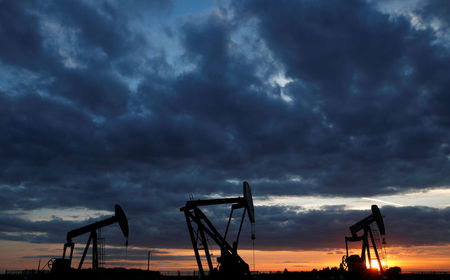Commodities
Oil prices in weekly loss after settling sharply lower amid China demand concerns

Investing.com– Oil prices fell to a weekly loss after settling sharply lower Friday, as dollar strength and ongoing concerns about demand from top oil importer China offset ongoing signs of improving domestic demand.
At 14:30 ET (18:30 GMT), fell $2.48 to settle at $80.34 a barrel, fell 2.7% to $82.80 a barrel
China demand concerns, dollar strength weigh amid few stimulus signals
Concerns over sluggish demand in the world’s biggest oil importer remained front and center, following softer-than-expected for the second quarter.
The readings came after data last week showed a decline in China’s oil imports in June.
Weak readings on the Chinese economy also came as the Third Plenum of the Chinese Communist Party, which began earlier in the week, yielded few cues on plans for any more stimulus measures.
Sentiment towards China was further dented by reports earlier this week suggesting that the U.S. was planning stricter trade restrictions on the country’s technology sector- a move that stands to attract retaliatory measures from Beijing. Speculation over a Donald Trump presidency also further soured sentiment towards China, given that Trump has maintained largely protectionist policies.
Trump also said that he will push for increasing U.S. oil production – a move that could herald higher supply in the coming years.
A stronger also weighed on oil prices as investors continued to digest remarks from Federal Reserve ahead of the blackout period starting Saturday.
Tighter markets, rate cut hopes offer oil some support
But expectations of tighter oil markets in the near-term offered crude some support. U.S. shrank for a third straight week as travel and fuel demand picked up in the summer months.
The prospect of interest rate rate cuts by the Federal Reserve also buoyed crude, given that such a scenario presents better conditions for economic growth and oil demand.
Outside the U.S., continued geopolitical ructions between Hamas and Israel, coupled with Houthi aggression in the Red Sea, kept some risk premia priced into oil markets.
“The oil market is once again relatively rangebound,”said analysts at ING, in a note. “To the upside, growing Chinese demand concerns are capping the market, following a raft of data earlier this week suggesting a softer demand picture. To the downside, expectations of a tight market through the third quarter continue to provide a floor to prices.”
On the supply front, meanwhile, the number of oil rigs fell by one to 477 from a week ago, Baker Hughes reported Friday.
(Peter Nurse, Ambar Warrick contributed to this article.)
Commodities
Oil prices rise; U.S. crude inventories plunge, Russia-Ukraine truce eyed
Commodities
India’s Reliance to stop buying Venezuelan oil over US tariffs, sources say
Commodities
Oil prices climb on Venezuela supply worries

 Forex3 years ago
Forex3 years agoForex Today: the dollar is gaining strength amid gloomy sentiment at the start of the Fed’s week

 Forex3 years ago
Forex3 years agoUnbiased review of Pocket Option broker

 Forex3 years ago
Forex3 years agoDollar to pound sterling exchange rate today: Pound plummeted to its lowest since 1985

 Forex3 years ago
Forex3 years agoHow is the Australian dollar doing today?

 Cryptocurrency3 years ago
Cryptocurrency3 years agoWhat happened in the crypto market – current events today

 World3 years ago
World3 years agoWhy are modern video games an art form?

 Commodities3 years ago
Commodities3 years agoCopper continues to fall in price on expectations of lower demand in China

 Economy3 years ago
Economy3 years agoCrude oil tankers double in price due to EU anti-Russian sanctions























